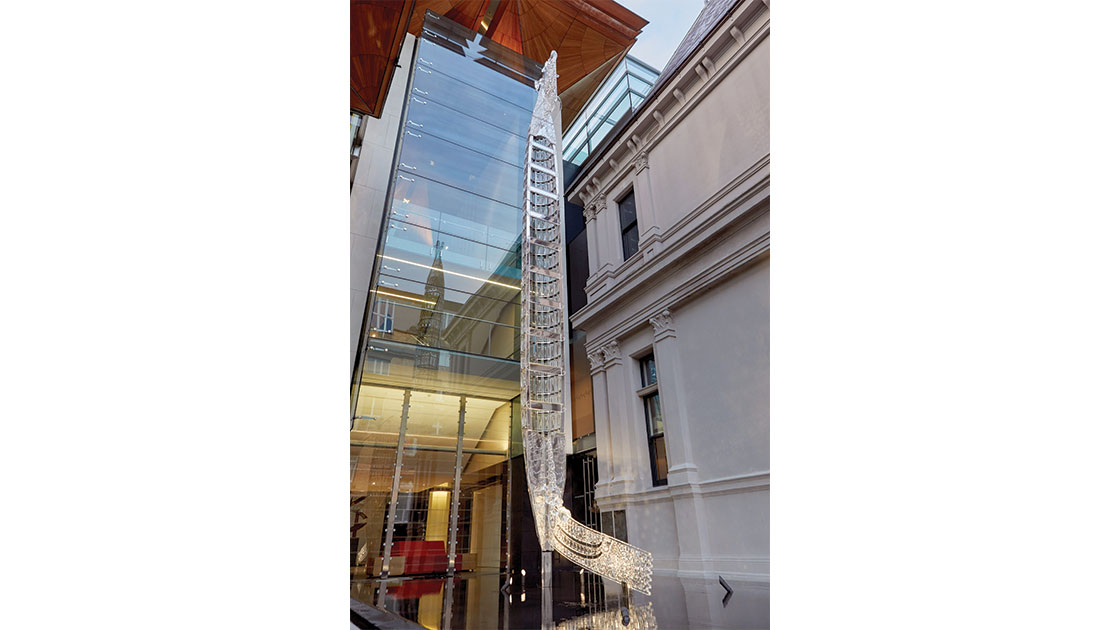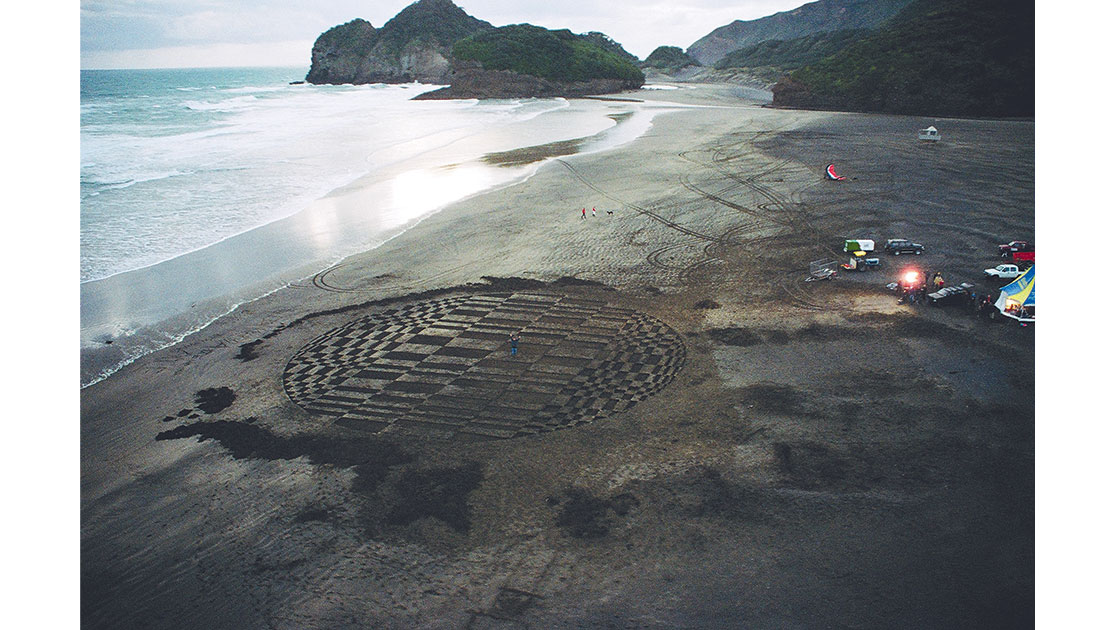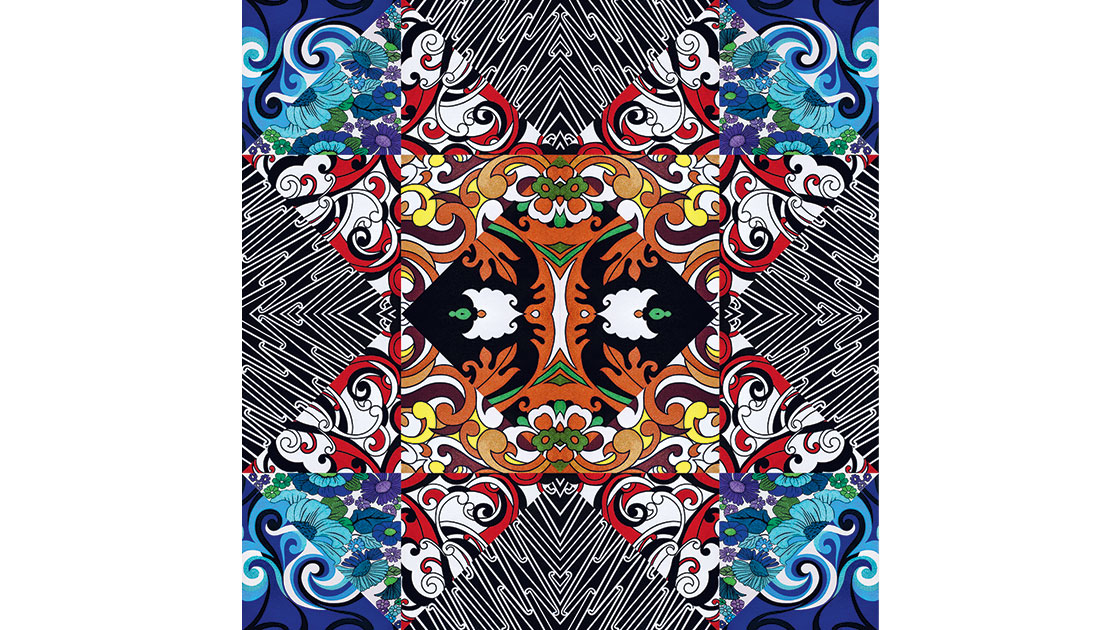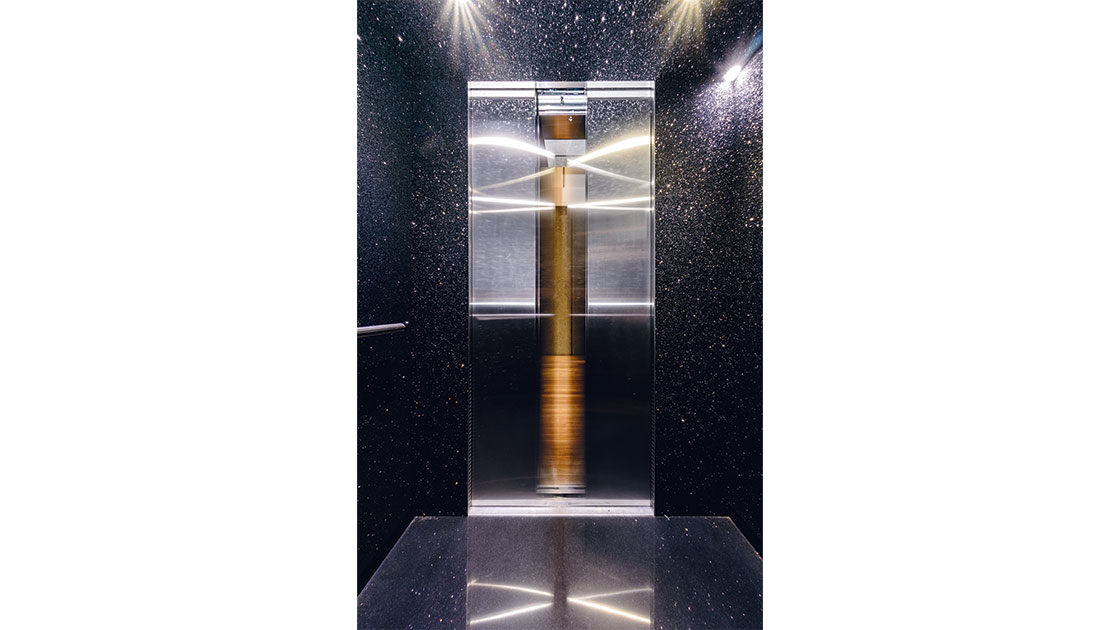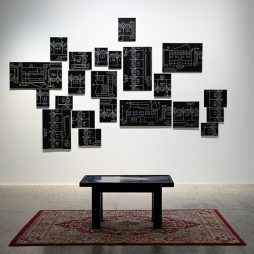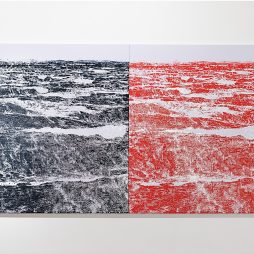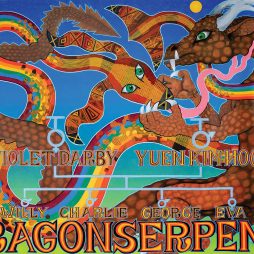Reuben Paterson
Reuben Paterson (Ngāti Rangitihi/Ngāi Tūhoe/Tūhourangi) is best known for his kaleidoscopic paintings and recently his sculptures, animations, and public art that employ traditional Māori kōwhaiwhai patterns with op-art sensibility, enlivened with glitter and dazzling colour. Pippa Mott spoke to Paterson in Auckland after the launch of his most ambitious public artwork.
Reuben Paterson was fresh out of art school when he left Auckland for Aviz, France, in 1997, to participate in the esteemed Moët & Chandon Arts Fellowship. Living on the outskirts of Paris in a crumbling chateau, he cycled to the station at any opportunity to journey to the city and visit the museums and galleries. Where previously the canon of art history had been contained in books, he revelled in the physicality and immediacy of an international art world that was suddenly available to him. Following the residency, Paterson spent two years living and working in the United Kingdom. Despite the romance of these international experiences, Paterson credits the employment of kōwhaiwhai in his practice, upon his return to Aotearoa, as the moment that truly catapulted his career.
Kōwhaiwhai are geometric patterns, traditionally used as genealogical markers in Māori art and architecture. Paterson’s first kōwhaiwhai-based work, The Wharenui that Dad Built, 2000, was a tribute to his recently departed father, and his use of these designs continues to reference his Ngāti Rangitihi/Ngāi Tūhoe/Tūhourangi patrilineage. Over time these patterns combined with a broader aesthetic register of vintage floral textile patterns, as demonstrated in such work as Whakapapa: get down upon your knees, 2009, which was selected for exhibition in the 6th Asia Pacific Triennial of Contemporary Art, Brisbane. He describes this expanded aesthetic as a nod to his matriarchal line. The coming together of the abstract and representational has the overall effect of resplendent abundance, often enhanced by his signature material – glitter.
Paterson first began experimenting with glitter whilst studying at the Elam School of Art in Auckland. “Art school for me was a very physical experience . . . At the core, in the past, Elam was about material research and pushing the boundaries. I think I’ve kept that inquisitive line of enquiry around material.” Paterson became interested in the depth of history of this seemingly superficial substance. Not only does it evoke ideas of craft, carnival, celebration, and drag, but his research revealed an entirely counter-intuitive embedded history: glitter manufacture had its origins in war. Aluminium chaff was initially developed as a countermeasure for radars. On another level, Paterson is fascinated with the evolutionary biology that underpins our ingrained attraction to that which sparkles. It has been argued that this is a co-evolved trait relating to our ability to detect water within our environment, and thus ensure our survival. Paterson notes that “you can’t escape the idea of luxury and wealth when it comes to anything that’s faceted or reflective . . . but at the core, it’s only trying to replicate water.”
Growing up on the west coast of Aotearoa’s North Island, Paterson was immersed in a glittering landscape where the “sparkling black sands of Piha were threaded with purple aurora-like ribbons.” In 2009 he returned to the west coast to develop an ephemeral artwork entitled There Goes the Moon at Te Henga, Bethells Beach. In an active demonstration of public art, the local community, including the Bethells Beach Surf Club, were enlisted to create the “sand painting,” working together to carve the op-art influenced design into the black sand. The monumental orb was crafted within the space of one twelve-hour tidal cycle, before being enveloped by the advancing waves and disappearing into the night. Materials that sparkle thus connect to broader notions of rhythms of nature and cosmology.
On the eighth of July this year, Paterson’s most ambitious public artwork to date was unveiled at the Auckland Art Gallery Toi o Tāmaki, following a six-year development period. The sculpture was jointly commissioned by Auckland Art Gallery and the Edmiston Trust, and produced with the support of Urban Art Projects. Guide Kaiārahi, 2021, is a ten-metre-high waka (Māori watercraft) that levitates above the Gallery’s forecourt pool, with a hull constructed of 595 shimmering crystals.
The work was inspired by the legend of a phantom waka that appeared at Lake Tarawera eleven days before the eruption of Mt Tarawera in 1886. “In the early hours of the tenth of June 1886, our ancestral mountains Wāhanga, Ruawāhia, and Tarawera split apart, spewing forth millions of tonnes of ash and debris. By floating this crystal waka above the Gallery’s pool, he appears magical – an apparition that floats in the sky while having a narrative linked closely to our own history. He guides us as an escort into unknown or unmapped territories, in much the same way as the waka of our very descent and the migrational journeys to Aotearoa,” says Paterson. The waka exists within a constellation of its own creation, formed by the refracted light of the chandelier crystals. “When displayed outdoors, he will always sit on the vertical axis, set like a compass needle facing skyward north.”
Paterson is very deliberate in his use of pronouns, in order to reiterate their unique identity and life force. Elaborating on this, he explains that “the thing that I’ve been thinking about recently is the idea of mythology and legend. We have a term here we use called ‘whakapapa,’ which basically translates as genealogy. Everything, both living and innate, has a whakapapa. Everything has a lineage, and everything goes back to earth and sky. So, nothing can be a myth, and nothing can be a legend, because it all ties back to primeval parentage. With any type of Māori philosophy that I use, I often try to think of it as an honest truth. Everything has a pronoun. The sand has a genealogy from cliffs and mountains. It’s a very comforting way to look at the world as one singular event that is interconnected, rather than a whole lot of separate entities struggling to exist at once.”
Another public artwork with a very distinct persona is The Golden Promise, 2015, which was commissioned as part of celebrations for the 50th Heritage Jubilee Year of Massey University. Taking the form of a giant golden chicken wing (measuring 3 × 4.5 m), the sculpture takes pride of place in the middle of a cloistered quadrangle. The work was unveiled alongside a spate of other public works, including Dane Mitchell’s Vaporous Sculptural Act, 2014, a steaming grate set into the manicured lawns. Both Paterson and Mitchell’s works challenge traditional notions of the monument, and elicited mixed reactions. Of his work, Paterson enthusiastically qualifies that “silly and serious can be part of the one conversation.” The work brings to mind similarly silly-serious public artworks such as David Shrigley’s Really Good, 2016, Monster Chetwynd’s 2018 Tate Britain Winter Commission (the marvellous Christmas slugs), and Ronnie van Hout’s freakish Quasi, 2019. The Golden Promise makes reference to the campus’s former life as a chicken farm, whilst simultaneously embodying notions of nurture and nourishment.
Paterson is driven by a personal philosophy of continual evolution, which has provided the foundation for a versatile practice. Whilst he gains traction as a public artist within Aotearoa, he continues to paint prolifically and work with sculpture on a more domestic scale. Simultaneously, he has sustained a connection with the fashion and design world. On the subject of his cross-disciplinary collaborations, Paterson is characteristically self-effacing, describing a desire to circumvent the egocentric aspects of creating and be “part of a bigger story.” By participating in new experiences, he is able to “stay excited about [his] practice, and to stay thankful.” Paterson’s joy and curiosity as a maker is infectious, infusing everything that he creates.


